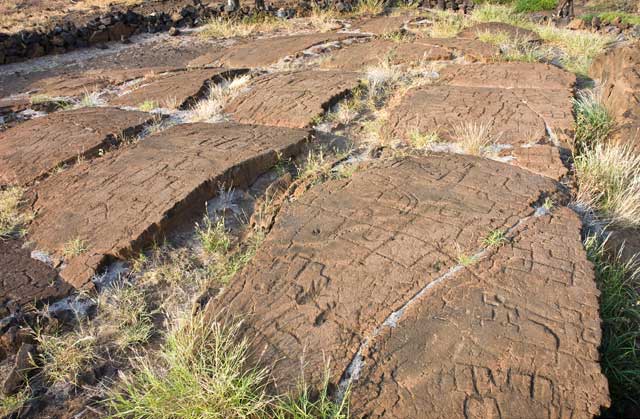 |
| Family group petroglyph. |
The 1 1/2 mile Malama trial is marked with a sign and an interpretive kiosk. We recommend that you go in the morning or late afternoon when it is cooler and the shadows are the longest for your best photography. The first part of the trail is paved and winds through A'a lava flows. The latter part of the trail is unpaved, but is not difficult although you will want to wear sturdy shoes for walking on the hard lava. Be sure to bring water and to wear sunscreen. Along the route are collections of stones with petroglyph carvings on them. Ancient Hawaiians called their rock art "k'i'i pohaku", or "images in stone". Families were important to the native Hawaiians and are represented by the numerous figures of people, family groups, chiefs, dancers, and paddlers. Additional glyphs related to culture and every day living can be found such as turtles, dogs, birds, fish, tools, sails and deity symbols. At the end of the trail is a large
PLEASE be careful as you navigate through this Hawaiian cultural treasure. The petroglyphs are very fragile and can be easily damaged. Even the oils left from touching the rocks are damaging. Be careful not to step on the petroglyphs or take rubbings as this can cause irreparable damage.
Out of all the Hawaiian Island, the Island of Hawaii contains the largest number of petroglyps in the state. Puakō is one of the largest collections with the Pu`uloa Petroglyphs located in Hawaii Volcanoes National Park being the largest. Petroglyphs on the Island are normally found on the smooth pahoehoe lava, along ancient trails the Hawaiians commonly use, on cliff faces, on on smooth interior cliff walls.
